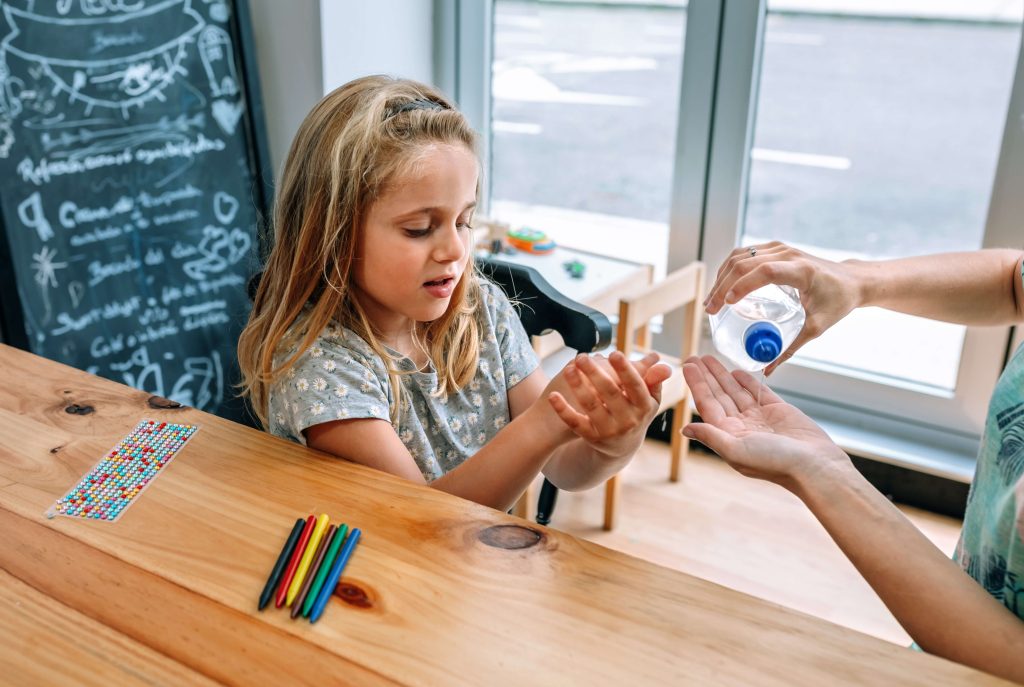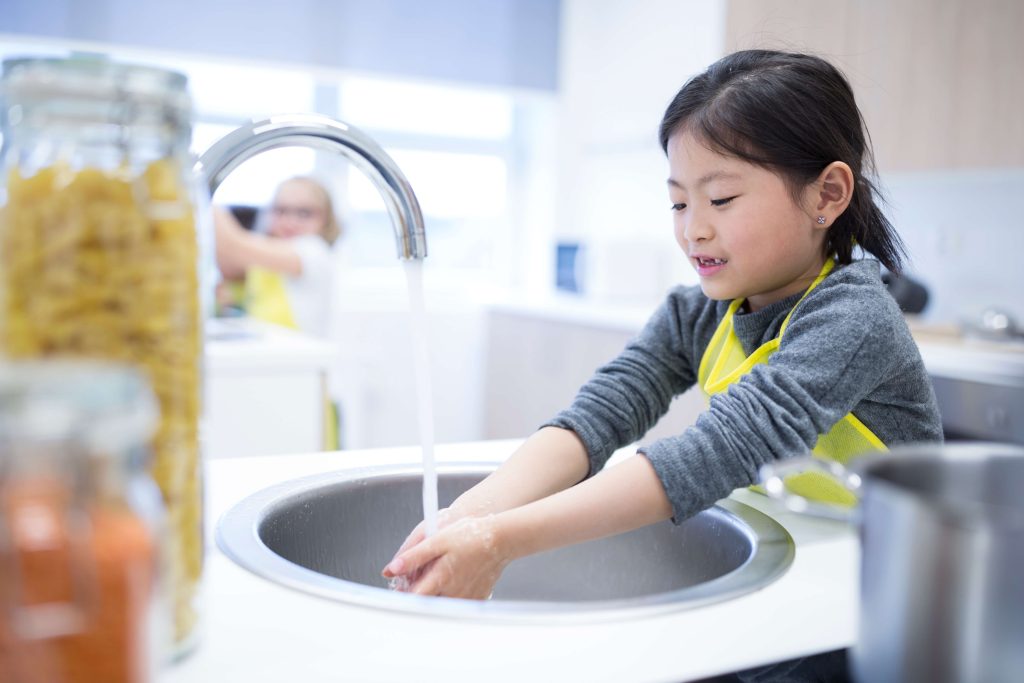
Fostering student success requires prioritising a safe, hygienic school environment. Implementing robust health and safety measures allows children to learn and grow in optimal conditions. This insight-laden guide covers key areas schools can focus on to safeguard student wellbeing.
We’ll explore instilling proper hygiene habits in students through education and facilities. Emergency preparedness, including first aid readiness and drills, is also essential. Strict safety protocols from playground rules to visitor screening protect students.
Together, these practices create the secure, wholesome setting students need to thrive. By making student health and safety a top priority, schools like yours will gain a robust foundation for effective learning and development.
The Foundation: Good Hygiene Practices
Proper hygiene is the cornerstone of a safe and healthy school experience. Teaching students good hygiene habits not only helps prevent the spread of illnesses but also instils lifelong practices that contribute to overall well-being. Here are some essential aspects of promoting good hygiene in schools:
1. Handwashing Education:
Frequent handwashing with soap and warm water is highly effective in reducing the transmission of contagions. Schools should educate students on the critical importance of regular handwashing, particularly before eating and after using restrooms.
Instruction on proper techniques ensures students develop lifelong habits for protecting health. Posting visual guides can reinforce the key steps, like lathering for 20 seconds and drying thoroughly. Adequate facilities and supplies make adherence easy. Fostering robust hand hygiene lays a strong foundation for school safety and infection control.
2. Respiratory Hygiene:
Coughs and sneezes spread germs at lightning speed in the bustling hallways and classrooms of schools. Teaching students simple respiratory etiquette can dramatically reduce the transmission of colds, influenza, and other contagious diseases – not least, COVID-19!
Gently remind children to cover their mouths and noses with a tissue whenever coughing or sneezing strikes. If no tissue is available, demonstrate how to cough or sneeze into the crook of the elbow rather than hands. Make covered trash bins accessible throughout the school to dispose of used tissues hygienically.
3. Personal Space Awareness:
Promote the concept of personal space to reduce the spread of illnesses. Explain the importance of avoiding close contact when someone is sick and encourage students to maintain a reasonable distance from one another.

4. Regular Cleaning And Disinfection:
Implement regular cleaning and disinfection protocols for frequently-touched surfaces like doorknobs, desks, and shared equipment. Make sanitising stations readily available throughout the school.
Equipping For Emergencies: First Aid Preparedness
Emergencies can happen anywhere, including schools. Being prepared for various situations, from minor injuries to more serious incidents, is vital. Here’s how schools can ensure they are equipped for emergencies:
1. First Aid Training:
Staff, including teachers and administrative personnel, should receive training in basic first aid. This knowledge can be invaluable in responding to injuries or medical issues until professional help arrives.
2. First Aid Kits:
Schools should maintain well-stocked first aid kits in easily accessible locations. These kits should include essentials like bandages, antiseptic wipes, adhesive tape, scissors, and CPR face shields.
3. Emergency Response Plans:
Develop comprehensive emergency response plans that cover a range of scenarios, such as fires, severe weather, or medical emergencies. Ensure that all staff and students are aware of these plans and practice drills regularly.
4. Medical Emergency Contacts:
Maintain an updated list of emergency contacts, including local hospitals and medical professionals. This information should be readily available to staff in case of medical emergencies.
5. AED Placement:
Consider installing automated external defibrillators (AEDs) in strategic locations within the school. AEDs can be lifesaving in cases of sudden cardiac arrest.
Safety Protocols: Building A Secure School Environment
Creating a safe school environment goes beyond hygiene and first aid. Safety protocols are essential to ensure the physical and emotional well-being of students. Here are some key aspects to consider:
1. Security Measures:
Implement security measures such as controlled access points, visitor check-in procedures, and surveillance cameras to enhance the safety of the school premises.
2. Bullying Prevention:
Develop and enforce anti-bullying policies and programs that promote a safe and inclusive school culture. Educate students and staff on recognising and reporting bullying behaviour.
3. Fire Safety:
Regularly inspect and maintain fire safety equipment, including alarms and extinguishers. Conduct fire drills to ensure that everyone knows how to respond in case of a fire.
4. Severe Weather Preparedness:
Develop plans for severe weather events such as severe heat waves or flooding. Ensure that students and staff are aware of shelter locations and evacuation procedures.
5. Health and Wellness Programs:
Promote overall health and wellness through programs that encourage physical activity, healthy eating, and mental health awareness.
6. Emergency Communication:
Establish efficient communication channels for disseminating information during emergencies. This includes notifying parents and guardians promptly in case of school closures or other critical situations.
7. Safe Transportation:
Ensuring the safety of students extends beyond the school premises, particularly during transportation to and from school-related activities. One way to enhance safety in this aspect is by leasing a school minibus. The Minibus Centre has a range of vehicles to choose from, allowing schools to have access to their own transport for however long they require it.
A Holistic Approach To Health And Safety
Ensuring a safe and healthy school experience is about more than just ticking off boxes on a checklist. It requires a holistic approach that incorporates the physical, mental, and emotional well-being of students and staff. Here are some additional considerations:
1. Mental Health Support:
Recognise the importance of mental health in the school setting. Provide access to counsellors or mental health professionals who can offer support and guidance to students facing emotional challenges.
2. Crisis Management Training:
Equip staff with crisis management training to help them respond effectively to situations that may arise, including those involving mental health crises.
3. Parental Involvement:
Engage parents and guardians in the school’s safety and health initiatives. Encourage their involvement in programs and discussions related to these topics.
4. Regular Health Check-ups:
Arrange regular health check-ups for students, including vision and hearing screenings, to catch and address potential health issues early.
5. Healthy Learning Environment:
Design classrooms and common areas to promote health and safety. Consider factors like lighting, air quality, ergonomic furniture, and the availability of outdoor spaces for physical activity.
Monitoring And Continuous Improvement
Maintaining a safe and healthy school environment is an ongoing process that requires monitoring and continuous improvement. Schools should regularly assess their safety and health initiatives and make necessary adjustments. Here’s how this can be achieved:
1. Regular Audits:
Conduct regular health and safety audits to identify areas that may need improvement. Engage staff, students, and parents in the audit process to gather diverse perspectives.
2. Feedback Mechanisms:
Establish feedback mechanisms that allow students, parents, and staff to report safety concerns, incidents, or suggestions for improvement. Act promptly on this feedback.
3. Professional Development:
Invest in ongoing professional development for staff to keep them updated on the latest safety and health practices. Encourage staff to share their knowledge and experiences to enhance the school’s overall preparedness.
A Brighter Future Through Safe And Healthy Schools
A safe, hygienic school environment is indispensable for student growth and learning. Schools can foster this through instilling good hygiene habits, first aid readiness, enforced safety protocols, and shared responsibility. Collaboration between schools and parents maximises these efforts.
Sustaining a secure, wholesome setting requires ongoing vigilance, adaptability, and commitment as circumstances evolve. By making student and staff wellbeing the top priority, schools both protect their current populations and nurture healthier generations ahead.
Together with families, schools lay the groundwork for academic excellence when they put health and safety first. This compounding impact will lead to brighter futures.











